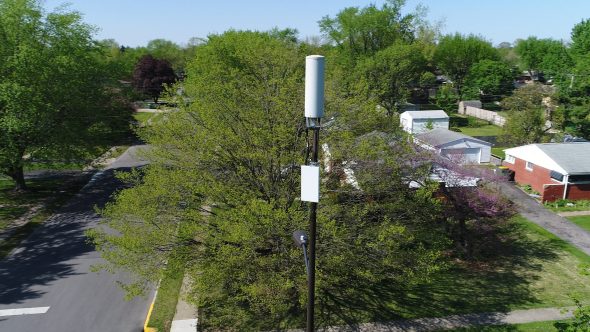 Projected returns on capital for the company’s Verizon Home offering could be lower than expected, bringing the financial viability of Verizon Home 5G fixed wireless into question, according to a research note issued by telecom financial analysts at MoffettNathanson today.
Projected returns on capital for the company’s Verizon Home offering could be lower than expected, bringing the financial viability of Verizon Home 5G fixed wireless into question, according to a research note issued by telecom financial analysts at MoffettNathanson today.
MoffettNathanson analysts did extensive research using public source material and information obtained through a Verizon web portal about the Verizon Home deployment in Sacramento– one of four markets where Verizon has launched the service.
The Verizon web portal that researchers used is designed to show which homes are expected to be able to get Verizon Home service, although the company also sends a technician to the homes of any potential customers who say they want service to confirm that. Researchers used the interface to enter thousands of addresses in zip codes in which Verizon offers Verizon Home.
The portal also revealed which addresses already have service, enabling researchers to estimate take rates. And data obtained through a freedom of information request gave Verizon access to the locations of Verizon small cells.
A Verizon spokesman had no comment on the analysis, which the researchers said they undertook because Verizon has offered relatively little financial information about Verizon Home, which launched in the four markets in October.

It’s important to note that Verizon Home deployments to date have been in the millimeter wave band, where Verizon has wide swaths of spectrum that can maximize the speeds the company can support, but which provides less range in comparison with the lower-frequency spectrum that network operators traditionally have used.
Financial Viability of Verizon Home 5G
Some of MoffettNathanson’s key findings:
- As of late February, Verizon had deployed about 390 small cells across Sacramento, of which at least 273 are being used for 5G.
- Researchers did what they called an “exhaustive” census of service eligibility for homes surrounding 107 of the 273 small cells. Based on that, they estimate that each small cell serves an area encompassing 27 eligible addresses.
- Approximately 6% of residential addresses in the portions of Sacramento tested are currently deemed “eligible” for 5G Home, according to the portal.
- Verizon’s take rate currently amounts to one subscribed single-family household per one-and-a-half 5G small cells, or about 3% of eligible single-family homes. The actual take rate is likely higher because researchers could not obtain full information for multi-dwelling units, although they estimate that MDUs represent a relatively small portion of homes in areas studied.
- The researchers argue that millimeter wave spectrum is limited by line of sight as well as distance. Verizon has said line of sight is less of a concern than some had expected. Nevertheless, according to the researchers, the Verizon web portal does not use a fixed radius around a small cell when delivering results about the availability (or likely availability) of Verizon Home. Instead, those results appear to take line of sight into account.
MoffettNathanson cautioned that Verizon has said that the web portal that was a key component of the researchers’ findings was based on conservative assumptions. They also cautioned that the long-term profitability of Verizon Home will depend on which spectrum bands Verizon uses to support Verizon Home, the extent to which infrastructure costs can be shared between Verizon fixed and mobile services, and other factors.
However, the researchers also offer some commentary that minimizes the impact of some of these variables. For example, they question how extensively Verizon will be able to leverage the same investments for mobile and fixed wireless, noting that “[t]he places where Verizon most needs to densify its wireless network . . . are generally dense urban markets” and “[b]y and large that’s not where the residential broadband opportunity is; it is instead mostly in the suburban ring.”
Given the non-radial, or what the researchers call “probabilistic” nature of coverage around small cells, researchers also argue that “there is simply no such thing as ‘optimal spacing,’” which they say, “makes it so hard to envision scaling this enterprise.”
Importantly, the researchers also argue that the cost to bring fiber to a telephone pole or streetlight to support Verizon Home (at least as currently deployed) is largely the same as the cost to bring fiber to a neighborhood splitter to support fiber-to-the-home (FTTH). And while the cost to bring fiber from that point to an individual home is higher than the cost to bring fixed wireless from an access point to an individual home, that difference could be negated if take rates for fixed wireless are less than for FTTH.


